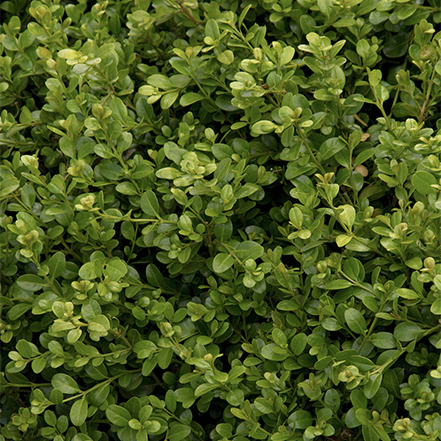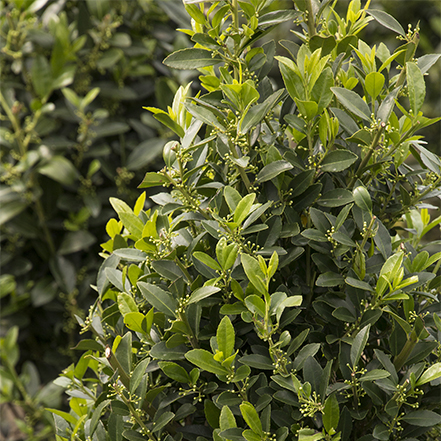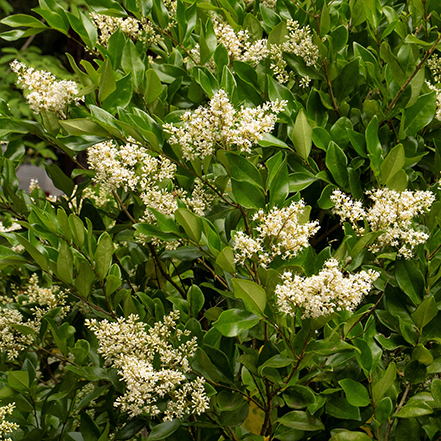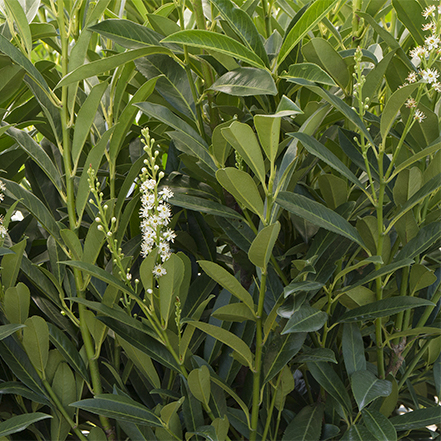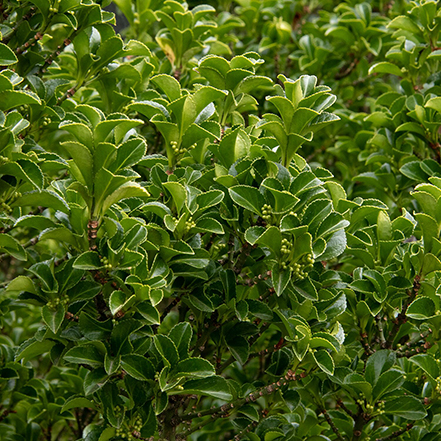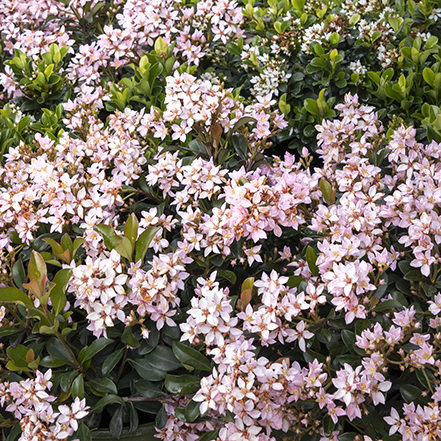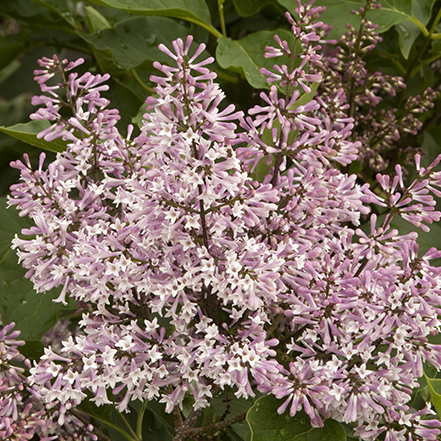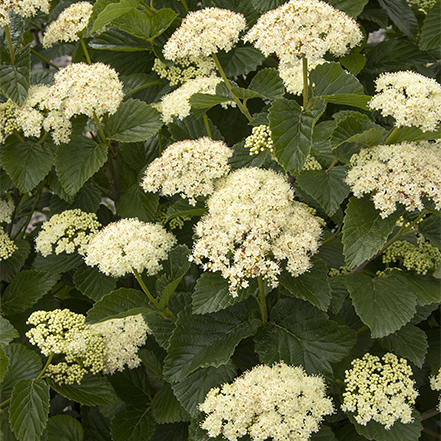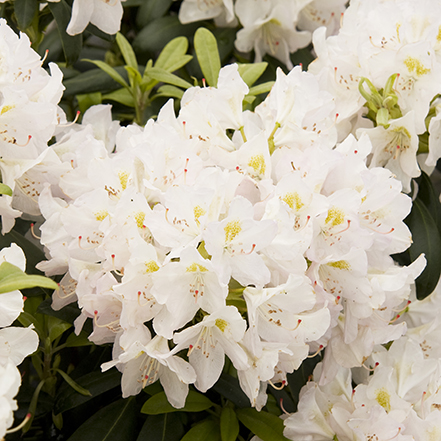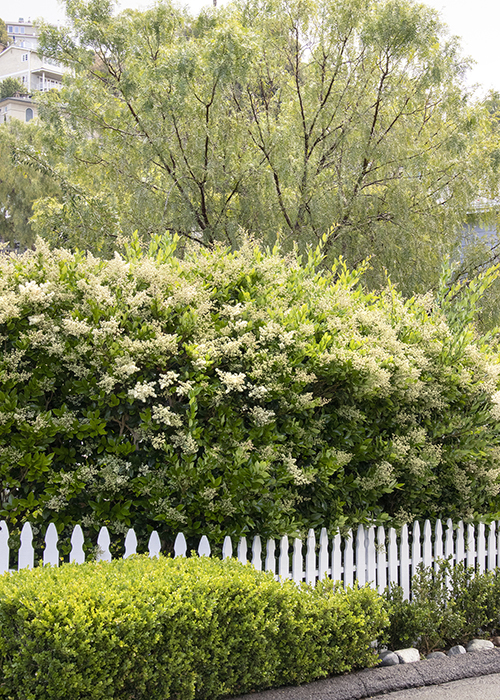Are you looking for a beautiful way to define your property boundary, create the walls of an outdoor room, grow a lush backdrop for a colorful perennial border, or have a privacy screen for your peaceful retreat or outdoor gathering places? Hedges are the perfect solution for you. Not only do they offer a gorgeous way to add privacy and protection to your outdoor spaces, but they can also serve as windbreaks and green walls, and they're perfect for offering nesting places for small birds.
The most important aspect of creating a beautiful hedge is choosing the right shrubs to plant. In this guide, we’ll cover what you need to know about selecting the best shrubs, we'll provide our top ten shrubs choices, and answer frequently asked questions about hedges.
Factors to Consider When Choosing Shrubs for Hedges
Before we dive into our 10 recommendations for the best shrubs for hedges, here are some factors to consider when selecting the best plants for your space.
Height and Width
One important factor to consider is the height and width of the plants. Think about how tall and wide you want your hedge to be. This will largely depend on its purpose; if you want full privacy from neighbors or to block out an unsightly view, you'll need a taller shrub. If privacy isn't a concern, you can opt for a shorter variety. It's worth noting that some shrubs can be pruned back regularly to control their size and shape. However, pruning can be time-consuming and may require you to cut back on the natural beauty of the plant. It's usually best to choose a variety that grows to your desired height and width naturally.
Growth Rate
Another key consideration is the growth rate of the shrubs you choose. Some varieties grow quickly, while others take a bit longer to establish themselves. If you're looking for a hedge that will provide privacy or a windbreak as soon as possible, a fast-growing shrub is best. Slower-growing varieties may take longer to achieve the desired effect but might also require less maintenance in the long run.
Foliage Density
The density of a shrub's foliage is also a crucial consideration. If you want a hedge that provides complete privacy, choose a shrub with dense foliage that grows close together. Some species, such as boxwood, are known for their tightly packed leaves, while others, like lilac, have larger leaves with a more open growth habit.
Climate Tolerance and Adaptability
It's important to choose shrubs that are well-suited to your climate and growing conditions. Some shrubs thrive in hot, dry weather, while others are better suited to cooler, more humid environments. Make sure to research the growing conditions of the shrubs you're interested in before making a purchase. You can use the My Plantfinder tool to set the filters and find the perfect shrub for your location and needs.
By taking your growing conditions into consideration, you can choose the best shrubs for your hedges and ensure a beautiful and functional addition to your garden.
The Top 10 Best Shrubs for Hedges
1. Boxwood (Buxus spp)
Boxwood is a classic choice for hedges thanks to its dense evergreen growth, easy-going nature, and ability to be easily shaped with pruning. Plus, most varieties are hardy in Zones 5 through 9, which covers a large swath of the country. Boxwood is a slow grower, which means it won’t require frequent pruning and maintenance. Green Beauty Boxwood (pictured here) is more heat, humidity, and drought-tolerant than others, making it a great choice if your garden often deals with those challenges.
Check out Green Tower Boxwood, which is perfect for a privacy screen thanks to its columnar growth. Or, try Green Mountain Boxwood for a naturally cone-shaped look that’s perfect in mass plantings. Get more info on how to choose the right boxwood for your garden here. Like boxwoods but want something a little different? You can find the best boxwood alternatives here.
2. Holly (Ilex spp.)
Holly is similar to boxwood in that it is a versatile evergreen shrub that adds year-round interest and thrives in many hardiness zones (often hardy in Zones 5-9). Holly comes in many varieties with different leaf shades and shapes, so depending on how you want to plant your shrubs, you’ll have plenty of choices with this plant.
For example, Ruby Colonnade® Holly produces new foliage that emerges deep red and then becomes dense, glossy, and bright green. An Emerald Colonnade® Holly (pictured here) has bright green foliage and produces small cream-colored flowers for a touch of light. And of course, you can opt for planting male pollenizer and fruiting females like the Berri-Magic® Kids Holly Combination to be rewarded with a profusion of bright red berries fall through winter.
3. Privet (Ligustrum spp)
Privet is a popular fast-growing hedge shrub that’s easy to shape and pollinator-friendly. With its dense growth and evergreen foliage, it forms a thick barrier that provides privacy and even helps block out noise. A Waxleaf Privet (pictured here) is perfect for warm climates (it's hardy in zones 7-11), and it produces fragrant, white blooms that buzz with pollinators in the spring.
A California Privet is another versatile hedge screen or windbreak that grows quickly and produces bright white flowers for adding a touch of brightness to your landscape in the spring. It's hardy in Zones 5-9.
4. Cherry Laurel (Prunus laurocerasus)
Cherry (or English) Laurel is an exceptionally handsome shrub most popular in mild-to-warm climates (Zones 6+) that produces showy white flowers in the springtime. This fast-growing, lush plant has dense foliage, making it ideal as a background shrub or privacy screen. Try a Jade Enchantress® Cherry Laurel or Volcano Cherry Laurel to add year-round interest to your yard with broad, glossy green leaves, creamy white flower spikes, and small black ornamental fruit.
Or, plant Bright ‘N Tight™ Carolina Laurel, which is not actually a cherry laurel, but a Carolina Laurel that is native to the US, for its large stature and adaptability to pruning. Schipka Cherry Laurel (pictured here) is another favorite for a tall, dense and flowering hedge.
5. Evergreen Euonymus
Euonymus is favored by many thanks to its low-maintenance, easy-care nature and lush, dark green foliage. This bulletproof beauty is adaptable to a wide range of soils and can take dry, hot summers. Plus, it's another fast-growing hedge option. This shrub works well as a clipped hedge and won’t take much work to maintain its glossy appearance.
Euonymus comes in a variety of sizes, so if you're looking for a taller hedge, you'll want to opt for Manhattan Euonymus, which offers mid-to-late summer flower clusters that produce small pink ornamental fruit in the fall. Another option is the evergreen Green Spire Euonymus (pictured here) which makes a great narrow hedge or screen. Looking for a brighter, more colorful hedge? Choose a variegated variety, like Golden Euonymus.
6. Indian Hawthorn (Rhaphiolepis spp)
Indian Hawthorn is a beloved evergreen shrub in warm climates (usually hardy in zones 7-10) thanks to its dense growth, profusion of spring flowers, neat habit, and heat- and drought-tolerance. It's low-maintenance and can grow tall and wide, so if you’re looking for privacy or a backdrop, this plant is ideal.
Ballerina Indian Hawthorn (pictured here) is perfect for low hedges in low-maintenance gardens, blooms with rose-pink flowers in spring and fall, and produces small dark berries. For a large, versatile, and colorful shrub better suited for privacy hedges, check out our Majestic Beauty Indian Hawthorn which produces huge clusters of fragrant, pearl-pink flowers each spring.
7. Lilac (Syringa spp)
If you live in a cool-to-mild climate (Zones 4-8) and want your hedge to burst in color and fragrance every year, choose lilacs. Lilacs are a favorite flowering shrub for hedges, as they have a dense and vigorous growth habit on top of their beloved fragrance, which is associated with the new beginnings of spring.
Enjoy the deep maroon-purple buds and extreme cold-hardiness of the Pocahontas Canadian Lilac, the soft lavender clusters of the Lavender Lady Lilac, or the classic soft-purple of the Miss Kim Korean Lilac (pictured here). You can use the compact Little Darling® Lilac for a low hedge, as it only grows up to 4' tall. Lilacs are not an evergreen but are quick to grow leaves in early spring.
8. Viburnum
Viburnum is another fast-growing semi-evergreen option for creating hedges. It's favored by gardeners for its dense growth, broad leaves, and prolific flowers, and beloved by birds for its berries. The Popcorn Viburnum, for example, produces popcorn ball-shaped blooms in spring that are complemented by its deeply veined green foliage.
If you need a dense hedge, the Sparkler® Arrowwood Viburnum is upright, deciduous, and lustrous, with ruffled foliage that turns bright yellow to red in the fall. Viburnum is great for creating borders, backdrops, or large screens for privacy.
9. Rhododendron
Rhododendrons are adored for their large, showy flowers and dramatic color. Plus, they're perfect as an evergreen hedge in a shaded area. Most varieties do well in cool-to-mild climates (Zones 4-9), so if you live in a hot, dry area, this may not be the best shrub choice for you.
When planted in the right habitat, rhododendrons can grow big and healthy and produce vibrant blooms, like the bright-pink flowers of Nova Zembla Rhododendron, or elegant trumpet-shaped white flowers like the White Catawba Rhododendron (pictured here). For a big blooming evergreen shrub with bursting rose-lilac colored flowers, try adding the Roseum Elegans Rhododendron to your landscape.
10. Hibiscus
If you want flowering hedges bursting with tropical color, hibiscus can give you just that. Hibiscus flowers bloom in a variety of colors, from bold, exotic reds (like the Jazzy Jewel® Ruby Hibiscus) to soft white with a deep-pink center (like the Chateau™ de Chantilly Rose of Sharon).
Contrast the bright hibiscus flowers with its glossy dark green foliage, and you have a shrub that can make a true statement in your landscape. Hibiscus comes in a variety of forms, from the tropical ( Jazzy Jewel® Hibiscus) to the cold-hardy (Chateau™ Rose of Sharon), so there's truly something for everyone!
You can find a complete Hibiscus Care Guide here, which outlines the different hibiscus options as well as how to care for them.
Maintenance and Pruning Tips for Shrubs Used in Hedges
Once you’ve found a shrub suited for your climate and landscape needs, it's important to give your plants the care and attention they need to grow strong and healthy. Here are some tips for maintaining and pruning shrubs used in hedges:
- Fertilize your shrubs according to package directions to encourage healthy growth.
- Water your shrubs to get them established, and then continue to irrigate when necessary during dry periods.
- If you'd like a neat, shaped hedge, prune your shrubs regularly to maintain their shape and density.
- Prune and remove any dead or damaged branches when needed.
- Pay attention to your shrubs during different times of the year to address any issues promptly.
Frequently Asked Questions
How close should I plant the shrubs?
How patient are you willing to be? There is some flexibility with how close to plant your hedge plants. The important thing is to balance your budget with how long you are willing to wait for your hedge to fill in. Planting closer will reduce the time it takes for your hedge to fill in, potentially by several years, but you will need to buy more plants.
The rate of growth is also something to consider. You may want to plant the very slow-growing Dwarf English Boxwood close enough that they're almost touching, but the big, fast-growing Waxleaf Privet will be able to fill in a bigger gap sooner.
Regardless of the plant, you always want to plant it closer than the mature width of the plant if you are looking for a seamless hedge.
When should I prune my hedge?
Pruning time will depend on the plant and how formal you want your hedge to be. Early spring before new growth is a good time to prune evergreen shrubs. If you are looking for a very refined, formal hedge, you might want to trim again after the first flush of new growth or trim any stray branches throughout the year.
However, early spring might not be a good time to trim your hedge if you are growing it for spring flowers, as you might be trimming off the flower buds. These are generally best to trim right after flowering. Make sure to check the care instructions for your particular plant to find out the best time to prune.
What plants make good hedges?
Hardy, dense shrubs tend to make the best hedges. The list above outlines our favorites, which includes boxwood, holly, cherry laurel, privet, and more. Your choice depends on factors such as desired height, growth rate, appearance, and specific growing conditions.
What makes good privacy hedges?
A good privacy hedge is one that provides you with the privacy you need, while also being attractive and easy to care for. See above for our top picks, and find more options here. Here are some factors to consider when choosing a privacy hedge:
- Height: Privacy hedges should be at least 6 feet tall, but taller is better. This will ensure that you have complete privacy from your neighbors or passersby.
- Density: The hedge should be dense enough to block out all views. Look for plants with thick leaves and branches.
- Evergreen: If you want privacy year-round, choose an evergreen hedge. This will keep your yard looking beautiful even in the winter.
What is a fast-growing hedge plant?
Some fast-growing hedge plants include lilac, privet, hibiscus, and roses. When choosing a hedge plant, remember to make sure it will thrive in your climate and follow any care instructions (like pruning and watering) to keep it healthy.Get more ideas for fast-growing shrubs here.
Learn More about Growing Shrubs and Using Them in Your Landscape
- Find large, healthy Monrovia plants at your local Monrovia retailer.
- Sign up for the Grow Beautifully newsletter. You'll get first access to exclusive plants, new editions, live webinars, free digital guides, expert design advice, and gardening tips.
- Design School: 5 Ways to Unlock Design Success with Shrubs
- Design School: Planting for Privacy
- Best Evergreen Shrubs for Privacy
- Hydrangea Care Guide
- Bold and Beautiful Drought-Tolerant Plants (Zones 7-11)
- How to Match the Best Evergreen Shrub to Your Landscape Need
- Best Fast-Growing Shrubs
- The Best Panicle Hydrangea Varieties for No-Fuss, Long-Lasting Blooms
- Elegant and Evergreen: The Best Boxwood Alternatives
- How to Prune Flowering Shrubs
- 10 Unique Shrubs for Fall Color
- Video: How to Plant a Shrub







